DISCLAIMER: Always consult with a healthcare professional before starting any new routines, programs, or nutrition plans to ensure you receive the best medical advice and strategy for your specific individual needs.
So is Primal the answer? Or is it Keto? While there is no one-size-fits-all diet that works for all women, balancing macronutrients can be particularly beneficial once you hit menopause.
The Macro Diet, a popular approach to nutrition, does precisely that. Focusing on balancing fat, protein, and carbohydrates, the three main macronutrients the body needs to help improve the overall quality of your diet, supporting muscle growth, metabolic balance, weight management, and ultimately your health.
The Role of Menopause in Your Diet
 The end of monthly cycles marks a significant milestone in a woman’s life. In your 40s periods might be quite variable and your ovaries might not pop out an egg as regularly as they used to. At some point in your 50s, they will cease altogether, triggering a range of changes. Joints get achy and stiff, skin wrinkles and sags, hair grays, and thins, and the waist thickens. You find it difficult to stay or fall asleep, leaving you feeling rundown and tired.
The end of monthly cycles marks a significant milestone in a woman’s life. In your 40s periods might be quite variable and your ovaries might not pop out an egg as regularly as they used to. At some point in your 50s, they will cease altogether, triggering a range of changes. Joints get achy and stiff, skin wrinkles and sags, hair grays, and thins, and the waist thickens. You find it difficult to stay or fall asleep, leaving you feeling rundown and tired.
There is no denying that menopause is to blame for many of these changes. Yet, how you lived in your 30s and 40s and how well you take care of your body post-menopause has a major effect on how fit, healthy, and energetic you are. Along with physical activity and practicing emotional self-care, how much and what you eat is key to staying healthy once you cross the line into your 50s. As food is a topic of interest for many menopausal women and so is a topic of much debate, let’s talk about your dietary strategy and the role of macronutrients in it.
Why Are Macronutrients Important for Daily Diet?
Macronutrients are important because they provide the body with energy and essential nutrients needed for repair, growth, and movement. Protein, fat, and carbohydrates are nutrients that your body needs in large quantities to maintain its systems, organs, and tissues.
Carbohydrates
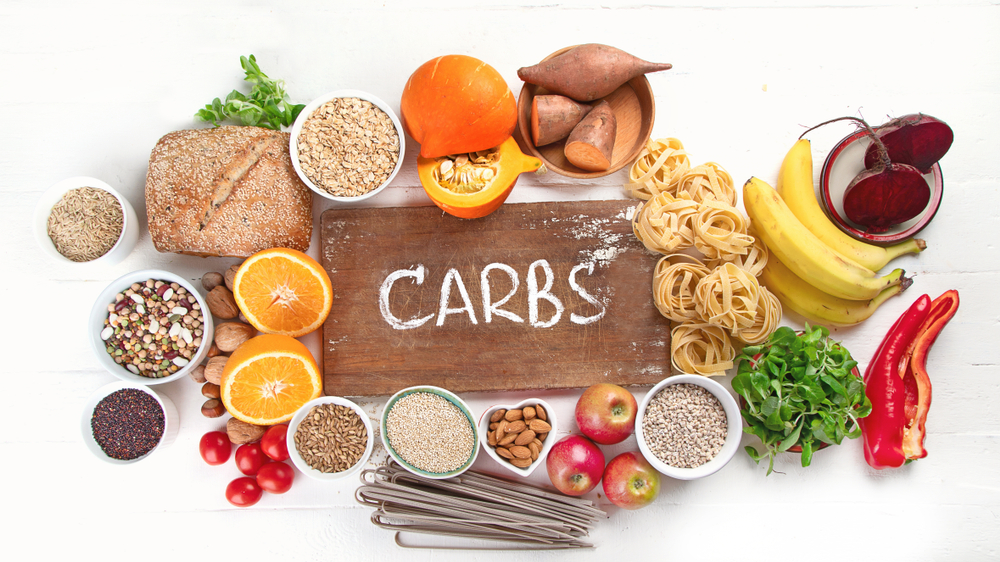 Carbohydrates are the primary source of energy, fueling the central nervous system, heart muscle, kidneys, and brain. They also help regulate blood sugar levels, boost serotonin production, aid digestion, and promote heart health. Carbohydrates are found in a variety of foods, including fruits and vegetables, dairy products, and whole grains. They can be divided into two main categories, complex and simple.
Carbohydrates are the primary source of energy, fueling the central nervous system, heart muscle, kidneys, and brain. They also help regulate blood sugar levels, boost serotonin production, aid digestion, and promote heart health. Carbohydrates are found in a variety of foods, including fruits and vegetables, dairy products, and whole grains. They can be divided into two main categories, complex and simple.
Containing one or two molecules, simple carbs are quick to digest and absorb. They are found in foods such as soda, candy, corn syrup, and raw and brown sugar, which are a quick source of energy. Yet they are low in nutritional value, cause spikes in blood sugar levels, and promote short-term fullness, leading to overweight and chronic conditions such as hypertension and diabetes.
Unlike them, complex carbohydrates contain long chains of molecules, take longer to absorb, and supply more sustained energy. They are found in foods such as fruits, vegetables, legumes, and grains, which are high in vitamins, minerals, and fiber. The fiber in complex carbohydrates helps maintain your digestive system healthily, regulates bowel movements, and prevents constipation.
Foods high in complex carbs also supply a range of essential micronutrients that are important for optimal health. Lentils, beans, and whole grains, for example, are a rich source of vitamin B which support nail, hair, and skin health. Foods like lentils, brown rice, and quinoa are high in iron which supports the production of red blood cells and hemoglobin.
Magnesium which is found in seeds, nuts, whole grains, and fruits and veggies is essential for nerve, muscle, and bone health. And zinc in foods like nuts, seeds, and legumes supports protein and collagen synthesis, plays a role in wound healing and cell division, and aids your metabolism and immune function.
That said, carbohydrates fit into a healthy diet after 50 for a number of reasons. In midlife the risk for osteoporosis increases. As carbohydrates supply the body with glucose, they play an important role in bone cell metabolism. Research also suggests that the intake of carbohydrates, along with phosphorus and vitamin B6, supports mineral absorption and has a beneficial effect on bone mass.
Second, carbohydrates help regulate blood sugar, and cutting them can cause blood glucose to drop, resulting in weakness and irritability. Due to hormonal and physical changes, many postmenopausal women already experience irritability, low energy, and fatigue. Consuming complex carbohydrates like vegetables, fruits, and whole grains supplies the body with glucose, thus preventing blood sugar crashes which contribute to fatigue and irritability.
Protein
 Protein is an essential macronutrient for everyone, at every life stage, not just bodybuilders and athletes. It is made of amino acids which aid the synthesis of key hormones such as glucagon, insulin, and thyroid hormones. These, in turn, regulate metabolism, internal temperature, energy levels, and body weight. Amino acids also participate in the synthesis of neurotransmitters that regulate behavior, cognition, and mood.
Protein is an essential macronutrient for everyone, at every life stage, not just bodybuilders and athletes. It is made of amino acids which aid the synthesis of key hormones such as glucagon, insulin, and thyroid hormones. These, in turn, regulate metabolism, internal temperature, energy levels, and body weight. Amino acids also participate in the synthesis of neurotransmitters that regulate behavior, cognition, and mood.
In addition, amino acids are needed to produce antibodies and natural killers and T cells which defend the body against viruses and bacteria. With 20 amino acids that make proteins in our bodies, there are many other functions they play. Some help maintain a proper fluid and pH balance while others participate in the transportation and storage of nutrients. Protein also aids muscle repair and growth and gives structure and strength to our skin, nails, hair, cartilage, ligaments, and tendons.
As women transition to menopause, protein is important for a number of reasons, including metabolic, bone, and muscle health. Protein helps regulate blood sugar levels and prevent spikes, thus improving metabolic health. Crashes and spikes in glucose levels can also lead to type 2 diabetes which women at menopause are at an increased risk of.
With an increased risk of osteoporosis in postmenopausal women, protein plays an important role in collagen formation, calcium absorption, and growth hormone production, all of which support bone health.
Lastly, when women cross the line into their 50s, they tend to lose muscle strength and mass, which puts them at an increased risk for fractures. As protein participates in muscle synthesis, sufficient intake, combined with physical activity, helps maintain muscle strength and mass.
Types of Protein
 As different foods contain different combinations of amino acids, it is important to consume a variety of protein sources, including plant- and animal-based. Also called complete, animal-based proteins supply amino acids in sufficient quantities. They are found in a variety of foods, including dairy, eggs, poultry, fish, and meat. Plant-based sources include grains, seeds, nuts, lentils, and beans. They are called incomplete because they may lack certain amino acids. Yet, combining different sources, like wholegrain bread and humus, or beans and rice, creates complete proteins.
As different foods contain different combinations of amino acids, it is important to consume a variety of protein sources, including plant- and animal-based. Also called complete, animal-based proteins supply amino acids in sufficient quantities. They are found in a variety of foods, including dairy, eggs, poultry, fish, and meat. Plant-based sources include grains, seeds, nuts, lentils, and beans. They are called incomplete because they may lack certain amino acids. Yet, combining different sources, like wholegrain bread and humus, or beans and rice, creates complete proteins.
In addition to the completeness, protein sources have different nutrient densities. Lentils and beans are rich in vitamins and minerals while seafood and fish supply omega-3 fatty acids.
While all protein sources supply essential nutrients, there are some foods that are best to limit or avoid altogether. These include fried meats such as fish and chicken which contain unhealthy fats. Processed meats, including sausage, bacon, and hot dogs are high in preservatives, saturated fat, and sodium and should be avoided. Full-fat dairy products such as butter, cheese, and whole milk are also high in saturated fat which increases your risk of heart disease and stroke.
Fats
 Consuming healthy facts is essential for several reasons, including nutrient absorption, hormone production, and brain health. Fats enable the body to absorb essential micronutrients such as vitamins K, E, D, and A which play a role in many processes, including coagulation, immune function, and bone and vision health.
Consuming healthy facts is essential for several reasons, including nutrient absorption, hormone production, and brain health. Fats enable the body to absorb essential micronutrients such as vitamins K, E, D, and A which play a role in many processes, including coagulation, immune function, and bone and vision health.
Fats are also needed for hormone production, including insulin, aldosterone, thyroxine, and estrogen. These hormones regulate glucose, blood pressure, and metabolism and support reproductive health. As about 60% of the brain is made up of fat, including omega-3 and omega-6, consuming healthy sources of fat supports cognitive health and proper brain functioning.
Lastly, consuming healthy fats lowers cholesterol levels and the risk of peripheral arterial disease, stroke, and heart attack.
Why Are Healthy Fats Important After Menopause?
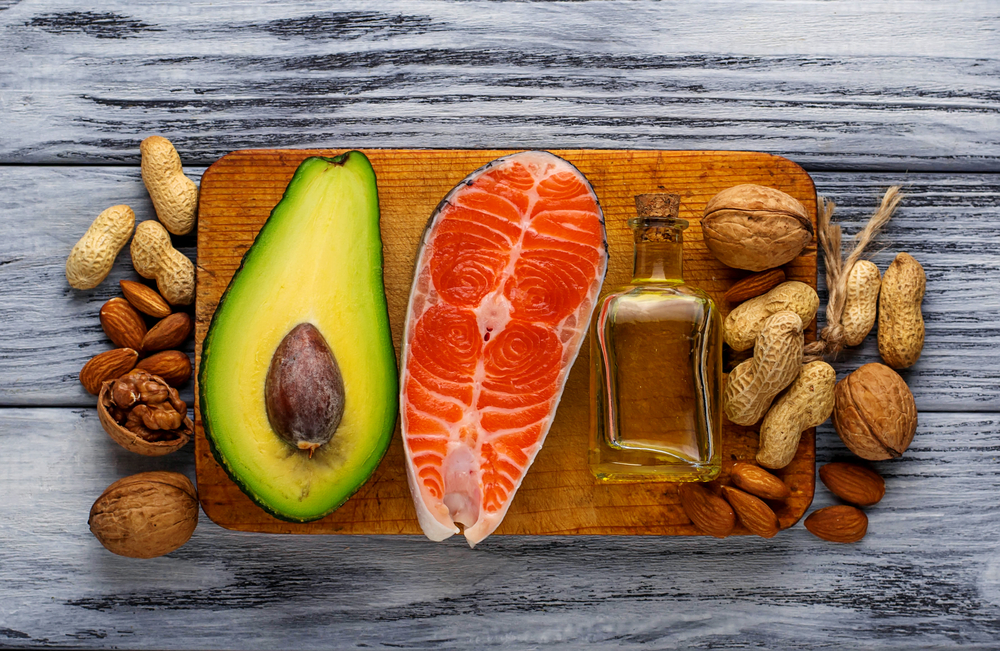 First, postmenopausal women are at risk of decline in cognitive function, including domains such as verbal and working memory, processing speed, and attention. Consuming foods that are high in healthy fat, such as nuts and fatty fish supports brain health and helps prevent cognitive decline.
First, postmenopausal women are at risk of decline in cognitive function, including domains such as verbal and working memory, processing speed, and attention. Consuming foods that are high in healthy fat, such as nuts and fatty fish supports brain health and helps prevent cognitive decline.
Second, consuming fats helps reduce the risk of osteoporosis which is higher after menopause. In addition to aiding the absorption of vitamins that support bone health, fat helps reduce chronic inflammation which is linked to osteoporosis and bone loss.
Third, as women transition to menopause, the risk for heart conditions increases, including high blood pressure, heart attack, stroke, and cardiovascular disease. Consuming fats supports heart health in many ways, such as reducing inflammation, lowering blood pressure, and improving cholesterol levels.
In addition to lowering cholesterol, polyunsaturated fats improve insulin sensitivity, thus reducing the risk for both, heart disease and type 2 diabetes.
Omega-3 fatty acids serve all three functions: they support heart health and help prevent cognitive decline and osteoporosis. Good sources of omega-3 include fatty fish such as sardines, mackerel, and salmon, as well as walnuts, chia seeds, and flaxseeds. In addition, foods that are high in healthy fats and vitamin D support bone health and reduce the risk of osteoporosis. Examples include fortified foods like cereal and milk and egg yolks and fatty fish.
Foods that are high in polyunsaturated and monounsaturated fats and omega-3 are all good choices. Monounsaturated fats which are found in seeds, nuts, olive oil, and avocado help reduce inflammation and cholesterol levels, thereby supporting heart health.
How do Macros Counting Help Women Lose Weight Over 50?
 As you get older, losing weight becomes more challenging. Hormonal changes, slower metabolism, decreased activity levels, and stress can contribute to weight gain. With a healthy diet and regular exercise, however, women can still achieve their weight and fitness goals and improve their overall weight.
As you get older, losing weight becomes more challenging. Hormonal changes, slower metabolism, decreased activity levels, and stress can contribute to weight gain. With a healthy diet and regular exercise, however, women can still achieve their weight and fitness goals and improve their overall weight.
Understanding Macros
 One of the main ways in which counting macros can aid your weight loss efforts is by helping you understand how the foods you are eating impact your body. By tracking your macros on a daily basis you will notice some trends and patterns that will help you to make adjustments and achieve your weight goals. This increased awareness of the foods you consume will also help you to make healthy choices such as nutrient-dense foods over ultra-processed foods.
One of the main ways in which counting macros can aid your weight loss efforts is by helping you understand how the foods you are eating impact your body. By tracking your macros on a daily basis you will notice some trends and patterns that will help you to make adjustments and achieve your weight goals. This increased awareness of the foods you consume will also help you to make healthy choices such as nutrient-dense foods over ultra-processed foods.
Balancing Macros
 Consuming sufficient amounts of carbs, fat, and protein also supports hormonal balance as all three macronutrients participate in the production and regulation of hormones. As hormones play a key role in regulating appetite, metabolism, and body fat distribution, tracking and balancing macronutrients can help with weight loss. It also ensures that your body gets antioxidants, vitamins, and minerals which help maintain hormonal balance.
Consuming sufficient amounts of carbs, fat, and protein also supports hormonal balance as all three macronutrients participate in the production and regulation of hormones. As hormones play a key role in regulating appetite, metabolism, and body fat distribution, tracking and balancing macronutrients can help with weight loss. It also ensures that your body gets antioxidants, vitamins, and minerals which help maintain hormonal balance.
Many women lose muscle mass due to changes in hormonal levels and metabolism and decreased physical activity. Yet, muscle loss contributes to weight gain in a number of ways. Our muscles are more metabolically active than other tissues and burn more calories, when you lose muscle mass, your metabolism slows down, making it more difficult to lose weight. Counting macros ensures that you consume sufficient amounts of protein which is essential for muscle repair, recovery, and growth.
Tracking macronutrients also encourages a focus on nutrient-dense foods which provide minerals and vitamins for muscle retention. Essential micronutrients that support muscle retention include potassium, B vitamins, vitamin D, magnesium, and calcium, which the Micro Diet supplies.
While counting macros for weight loss can be an effective strategy, the ratio of macronutrients that works best for you depends on factors such as weight, age, and activity level. Menopausal women need fewer carbohydrates to maintain normal blood sugar levels and more protein to build muscle mass. Physical activity is another factor that influences macronutrient breakdown. As a rule, the more physically active you are, the higher the percentage of carbohydrates you would need.
How to Calculate Your Calorie Intake
 In addition to your ideal macronutrient breakdown, you also need to figure out how many calories you need. To do this, multiply your weight (kg) by 10, and your height (cm) by 6.25, add both numbers and subtract your age X 5 and 161. If you weigh 75 kg, are 1.65 cm, and are 54 years old, the equation will look like this:
In addition to your ideal macronutrient breakdown, you also need to figure out how many calories you need. To do this, multiply your weight (kg) by 10, and your height (cm) by 6.25, add both numbers and subtract your age X 5 and 161. If you weigh 75 kg, are 1.65 cm, and are 54 years old, the equation will look like this:
Calories/day = (10 x 75 + 6.25 x 165) – 5 x 54 – 161 = 1350
Depending on your activity level, multiply this number by:
– Very active: x 1.9
– Moderately active: x 1.55
– Lightly active: x 1.375
– Sedentary: x 1.2
So, if you are moderately active, you will need 1350 x 1.55 or 2092 calories/day to lose weight.
If you’ve figured out you need about 2,100 calories to reach your weight loss goals, you can split them by following the typical recommendations:
– Protein: 10% – 35%
– Fats: 20% – 35%
– Carbohydrates: 45% – 65%
Depending on your age, weight, activity level, and fitness goals, you might end up splitting them like:
– Protein: 35% or 735 calories
– Fats: 20% or 420 calories
– Carbohydrates: 45% or 945 calories
You want to turn these into grams. Divide protein and carbs by 4 and fat by 9.
Now you know what your ideal breakdown looks like:
– Protein: 735 / 4 = 183 grams
– Fats: 420 / 9 = 47 grams
– Carbohydrates: 945 / 4 = 236 grams
Wrapping up
 Consuming the right balance of macronutrients ensures that you’re meeting your nutritional needs by following a varied and balanced diet. And whether your goal is to improve your overall health, boost your energy, build muscle, or lose weight, counting your macros can be an effective and valuable strategy.
Consuming the right balance of macronutrients ensures that you’re meeting your nutritional needs by following a varied and balanced diet. And whether your goal is to improve your overall health, boost your energy, build muscle, or lose weight, counting your macros can be an effective and valuable strategy.
If it is the first time you’re counting macros for weight loss, it can feel a bit complicated. With a little practice, however, you will learn how to count and track your intake to achieve your weight loss goals. By understanding the role of fats, protein, and carbohydrates, paying attention to ratios, and incorporating more nutrient-dense foods, you will be more confident in your ability to eat healthfully and well.
DISCLAIMER: Always consult with a healthcare professional before starting any new routines, programs, or nutrition plans to ensure you receive the best medical advice and strategy for your specific individual needs.


 Developed by the
Developed by the Here’s a step-by-step guide to incorporating this activity into your life
Here’s a step-by-step guide to incorporating this activity into your life
 To fully immerse in nature and embrace the experience, disconnect from all of your gadgets, including smartphones, headphones, and tablets. The constant messages, alerts, and notifications can be a source of distraction that keeps you engaged. This can make it difficult to stay present, appreciate the scents, sounds, and sights of nature, and fully immerse in the experience.
To fully immerse in nature and embrace the experience, disconnect from all of your gadgets, including smartphones, headphones, and tablets. The constant messages, alerts, and notifications can be a source of distraction that keeps you engaged. This can make it difficult to stay present, appreciate the scents, sounds, and sights of nature, and fully immerse in the experience. 
 Keep your eyes open and observe your surroundings. Avoid thinking about deadlines or emails and stay mindful and present. You will be surprised by the variety of plants and wildlife that you see while engaging in mindful observation. Allow yourself to fully immerse, pay attention to nature’s small details, feel the soil and leaves, and smell the sweet, woodsy scent of forest air. Let nature enter through your feet, hands, nose, eyes, and ears, wandering aimlessly and slowly. Let the forest in and savor nature’s bounty and serenity.
Keep your eyes open and observe your surroundings. Avoid thinking about deadlines or emails and stay mindful and present. You will be surprised by the variety of plants and wildlife that you see while engaging in mindful observation. Allow yourself to fully immerse, pay attention to nature’s small details, feel the soil and leaves, and smell the sweet, woodsy scent of forest air. Let nature enter through your feet, hands, nose, eyes, and ears, wandering aimlessly and slowly. Let the forest in and savor nature’s bounty and serenity.  Woods bathing has been shown to offer several benefits, including stress reduction.
Woods bathing has been shown to offer several benefits, including stress reduction. Walking in nature can help stimulate the production of serotonin, a chemical that regulates mood. At normal levels, serotonin promotes feelings of well-being, calm, and contentment, making you feel happier, emotionally stable, and more focused. Low levels of serotonin, on the other hand, increase the risk for a variety of mood disorders, including anxiety and depression.
Walking in nature can help stimulate the production of serotonin, a chemical that regulates mood. At normal levels, serotonin promotes feelings of well-being, calm, and contentment, making you feel happier, emotionally stable, and more focused. Low levels of serotonin, on the other hand, increase the risk for a variety of mood disorders, including anxiety and depression. When you spend time in a natural environment, you are removed from the stress, distractions, and noise of city life, freeing up more mental space for creative thinking. Immersing yourself in nature also exposes you to a variety of textures, smells, sounds, and sights which can be a source of inspiration and new ideas.
When you spend time in a natural environment, you are removed from the stress, distractions, and noise of city life, freeing up more mental space for creative thinking. Immersing yourself in nature also exposes you to a variety of textures, smells, sounds, and sights which can be a source of inspiration and new ideas. Spending mindful time in nature can help strengthen your immune system in several ways. First, spending time outdoors can help you get the sunshine and vitamin D you need. Vitamin D plays an important role in regulating specific immune cells as well as your overall immune function.
Spending mindful time in nature can help strengthen your immune system in several ways. First, spending time outdoors can help you get the sunshine and vitamin D you need. Vitamin D plays an important role in regulating specific immune cells as well as your overall immune function.  Several
Several While more research is needed to ascertain how spending time in nature aids recovery, the preliminary evidence is promising, suggesting that being in a natural environment accelerates recovery.
While more research is needed to ascertain how spending time in nature aids recovery, the preliminary evidence is promising, suggesting that being in a natural environment accelerates recovery.  With few crowds, towering trees, and a network of hiking trails, Humboldt Redwoods State Park is an excellent choice for practicing woods bathing. As the park is found in a remote rural location, it can offer quiet seclusion to connect with nature without distraction. There are plenty of secluded and quiet spots to immerse yourself in your surroundings, including Mattole Beach, Rockefeller Forest, Bull Creek Flats, and the Cuneo Creek Horse Camp. You will also find many trails where you can wander for hours away from crowds and noise. Trails that tend to have fewer visitors include the Drury-Chaney Loop, Founders Grove Nature, and Bull Creek Trails.
With few crowds, towering trees, and a network of hiking trails, Humboldt Redwoods State Park is an excellent choice for practicing woods bathing. As the park is found in a remote rural location, it can offer quiet seclusion to connect with nature without distraction. There are plenty of secluded and quiet spots to immerse yourself in your surroundings, including Mattole Beach, Rockefeller Forest, Bull Creek Flats, and the Cuneo Creek Horse Camp. You will also find many trails where you can wander for hours away from crowds and noise. Trails that tend to have fewer visitors include the Drury-Chaney Loop, Founders Grove Nature, and Bull Creek Trails.  A vast, pristine area in Southeast Alaska, the Tongass National Forest offers plenty of spots and opportunities for forest bathing. Some great spots include the Eagle Beach State Recreation Area, Admiralty Island National Monument, and Mendenhall Glacier. A beautiful and idyllic stretch of beach, the Eagle Beach State Recreation Area is a great place for beachcombing, sunbathing, and wildlife viewing. You will find several trails, like the Rainforest, Outer Point, and Eagle Beach Trails, offering plenty of opportunities for leisurely walks, relaxation, birdwatching, and more.
A vast, pristine area in Southeast Alaska, the Tongass National Forest offers plenty of spots and opportunities for forest bathing. Some great spots include the Eagle Beach State Recreation Area, Admiralty Island National Monument, and Mendenhall Glacier. A beautiful and idyllic stretch of beach, the Eagle Beach State Recreation Area is a great place for beachcombing, sunbathing, and wildlife viewing. You will find several trails, like the Rainforest, Outer Point, and Eagle Beach Trails, offering plenty of opportunities for leisurely walks, relaxation, birdwatching, and more. With picturesque waterfalls, stunning fall foliage, and an abundance of wildlife, Green Mountain National Forest offers a variety of trails and natural settings that promote a sense of serenity, calm, and relaxation. You can take Stratton Mountain or Deer Leap Trail to enjoy beautiful views of the valleys and the Adirondack or Green Mountains. While strolling along the trails, you will find plenty of opportunities and spots to practice relaxation and observe wildlife in a forest ablaze with violets, trillium, and asters.
With picturesque waterfalls, stunning fall foliage, and an abundance of wildlife, Green Mountain National Forest offers a variety of trails and natural settings that promote a sense of serenity, calm, and relaxation. You can take Stratton Mountain or Deer Leap Trail to enjoy beautiful views of the valleys and the Adirondack or Green Mountains. While strolling along the trails, you will find plenty of opportunities and spots to practice relaxation and observe wildlife in a forest ablaze with violets, trillium, and asters.  Great Smoky Mountains National Park is the home of a diverse ecosystem, towering rock formations, scenic valleys, beautiful meadows, and high peaks, offering stunning views and serene hiking experiences. The many trails you can take include Abrams Falls, Alum Cave, and Ramsey Cascades, among others, which provide ample opportunities for relaxation, wildlife viewing, camping, and picnicking. The area is known for its rich biodiversity, including more than 240 species of birds and 1,500 species of flowers, offering excellent opportunities to immerse yourself in the scents and sounds of nature.
Great Smoky Mountains National Park is the home of a diverse ecosystem, towering rock formations, scenic valleys, beautiful meadows, and high peaks, offering stunning views and serene hiking experiences. The many trails you can take include Abrams Falls, Alum Cave, and Ramsey Cascades, among others, which provide ample opportunities for relaxation, wildlife viewing, camping, and picnicking. The area is known for its rich biodiversity, including more than 240 species of birds and 1,500 species of flowers, offering excellent opportunities to immerse yourself in the scents and sounds of nature.  In search of holistic and natural ways to enhance their well-being, many people have discovered the benefits of spending mindful time in nature. Through meditation, yoga, creative expression, forest walks, and sensory awareness, forest bathing offers practitioners the opportunity to immerse themselves in their surroundings, deepen their connection with nature, and experience its healing power.
In search of holistic and natural ways to enhance their well-being, many people have discovered the benefits of spending mindful time in nature. Through meditation, yoga, creative expression, forest walks, and sensory awareness, forest bathing offers practitioners the opportunity to immerse themselves in their surroundings, deepen their connection with nature, and experience its healing power.
 Are women more prone to suffer from diastasis recti abdominis? Yes, women are more prone to suffer from diastasis recti abdominis than men, particularly during and after pregnancy. The condition affects about
Are women more prone to suffer from diastasis recti abdominis? Yes, women are more prone to suffer from diastasis recti abdominis than men, particularly during and after pregnancy. The condition affects about 

 These routines will help you strengthen your abdominal muscles and if you do them consistently close the gap caused by diastasis recti.
These routines will help you strengthen your abdominal muscles and if you do them consistently close the gap caused by diastasis recti. 


 Pregnancy and exercise are fully compatible unless your doctor advises you not to. Avoid exercise if you have persistent bleeding, cervical insufficiency, low-lying placenta after 26 weeks, preeclampsia, ruptured membranes, anemia, or chronic heart or lung disease.
Pregnancy and exercise are fully compatible unless your doctor advises you not to. Avoid exercise if you have persistent bleeding, cervical insufficiency, low-lying placenta after 26 weeks, preeclampsia, ruptured membranes, anemia, or chronic heart or lung disease. Some types of exercise are safe while pregnant, including Pilates, yoga, jogging, aqua aerobics, stationary cycling, and brisk walking. During the first trimester, it is generally safe to engage in more vigorous activities like moderate weightlifting, running, and squats. Exercises that are safe during the second trimester include slow jogging, brisk walking, aqua aerobics, and swimming. Low-impact exercises are best during the third trimester, including relaxation and breath exercises, yoga, Pilates, and aqua aerobics.
Some types of exercise are safe while pregnant, including Pilates, yoga, jogging, aqua aerobics, stationary cycling, and brisk walking. During the first trimester, it is generally safe to engage in more vigorous activities like moderate weightlifting, running, and squats. Exercises that are safe during the second trimester include slow jogging, brisk walking, aqua aerobics, and swimming. Low-impact exercises are best during the third trimester, including relaxation and breath exercises, yoga, Pilates, and aqua aerobics. As Pilates carries minimal risk, it is considered safe during pregnancy, with multiple benefits for expectant mothers. Pregnancy workouts focus on strengthening and stretching the pelvic floor muscles to prepare you for labor and postpartum recovery.
As Pilates carries minimal risk, it is considered safe during pregnancy, with multiple benefits for expectant mothers. Pregnancy workouts focus on strengthening and stretching the pelvic floor muscles to prepare you for labor and postpartum recovery.  Water walking and pool aerobics are good choices if you are a less confident swimmer, offering several health benefits. According to a
Water walking and pool aerobics are good choices if you are a less confident swimmer, offering several health benefits. According to a During pregnancy, relaxation can help reduce stress and anxiety and has a positive effect on both the woman’s emotional state and the fetus.
During pregnancy, relaxation can help reduce stress and anxiety and has a positive effect on both the woman’s emotional state and the fetus.  Yoga is not only safe during pregnancy but offers multiple health benefits. An approach focused on breathing, mindfulness, and stretching, prenatal yoga increases endurance, flexibility, and strength and helps relieve stress and anxiety.
Yoga is not only safe during pregnancy but offers multiple health benefits. An approach focused on breathing, mindfulness, and stretching, prenatal yoga increases endurance, flexibility, and strength and helps relieve stress and anxiety.  Because of the position of the fetus and the size of the womb, the lungs don’t have enough space to expand, causing shortness of breath. Breathing deeply and slowly enables the lungs to work more efficiently, helping you to ease breathlessness during pregnancy. Deep breathing also brings more oxygen to the baby and helps you relax during labor and better cope with contractions and pain.
Because of the position of the fetus and the size of the womb, the lungs don’t have enough space to expand, causing shortness of breath. Breathing deeply and slowly enables the lungs to work more efficiently, helping you to ease breathlessness during pregnancy. Deep breathing also brings more oxygen to the baby and helps you relax during labor and better cope with contractions and pain.  Moving your body into different postures and stretching keeps your pelvic floor muscles in good condition. Regular practice helps increase endurance, strength, and flexibility, facilitating a smooth birth.
Moving your body into different postures and stretching keeps your pelvic floor muscles in good condition. Regular practice helps increase endurance, strength, and flexibility, facilitating a smooth birth.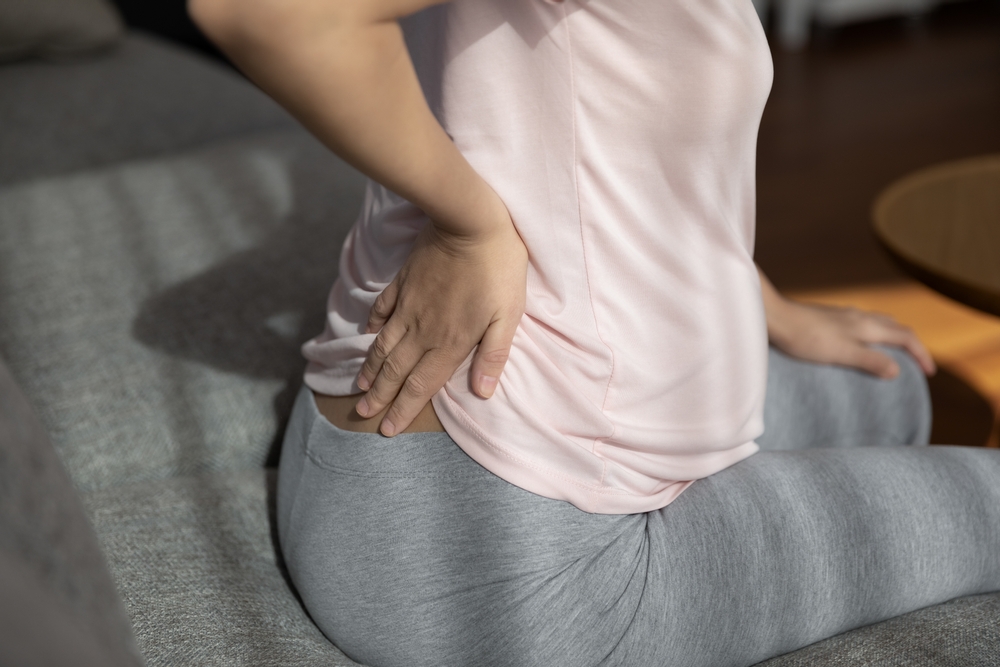 Yoga for pregnant women
Yoga for pregnant women Practicing deep breathing and yoga activates the parasympathetic nervous system, improving sleep quality and calming the mind. Women attending prenatal yoga classes
Practicing deep breathing and yoga activates the parasympathetic nervous system, improving sleep quality and calming the mind. Women attending prenatal yoga classes Yoga helps improve self-awareness by encouraging practitioners to stay present and focus on their sensations and feelings. Mindful meditation creates a space for your feelings and thoughts to rise, be felt and experienced, and let them go.
Yoga helps improve self-awareness by encouraging practitioners to stay present and focus on their sensations and feelings. Mindful meditation creates a space for your feelings and thoughts to rise, be felt and experienced, and let them go.  Yoga allows you to slow down and relax and tune out distractions and into your body and mind. Practicing the sequence of postures, breathing, and meditation allows you to focus on how your body changes and what is happening to your baby. As meditation and mindfulness calm and clear the mind, they create a mental space to bond with your baby on a deeper level.
Yoga allows you to slow down and relax and tune out distractions and into your body and mind. Practicing the sequence of postures, breathing, and meditation allows you to focus on how your body changes and what is happening to your baby. As meditation and mindfulness calm and clear the mind, they create a mental space to bond with your baby on a deeper level.  Exercising during pregnancy can benefit your health in several ways, including physically, mentally, and emotionally. Regular pregnancy exercise improves your flexibility and strength, promotes a healthy weight, improves your energy and mood, and reduces the risk of gestational diabetes, preterm delivery, and Cesarean birth.
Exercising during pregnancy can benefit your health in several ways, including physically, mentally, and emotionally. Regular pregnancy exercise improves your flexibility and strength, promotes a healthy weight, improves your energy and mood, and reduces the risk of gestational diabetes, preterm delivery, and Cesarean birth. 

 Traditional herbal remedies come from plants, and with little to no processing, keeping the most of their natural healing power.
Traditional herbal remedies come from plants, and with little to no processing, keeping the most of their natural healing power. Herbal medicine is a comprehensive and integrated method of treatment. It’s based on treating the person, rather than the symptoms.
Herbal medicine is a comprehensive and integrated method of treatment. It’s based on treating the person, rather than the symptoms. Traditional herbal medicine allows for individualized healing plans, that are tailored to your particular situation, making it the more personalized approach to health.
Traditional herbal medicine allows for individualized healing plans, that are tailored to your particular situation, making it the more personalized approach to health.
 Unlike, traditional medications, herbal meds are not as chemically processed and better received by the body. They are also much less likely to negatively interact with other supplements or drugs than traditional medicinal drugs.
Unlike, traditional medications, herbal meds are not as chemically processed and better received by the body. They are also much less likely to negatively interact with other supplements or drugs than traditional medicinal drugs. Since they are less processed, are usually locally grown, and sustainably resourced herbal medications are also the more environmentally-friendly option.
Since they are less processed, are usually locally grown, and sustainably resourced herbal medications are also the more environmentally-friendly option.
 As we’ve already mentioned herbal medicine has a wide spectrum of applications. Herbs are even great as preventive care.
As we’ve already mentioned herbal medicine has a wide spectrum of applications. Herbs are even great as preventive care.  Many herbs have preventive properties, as well. This means they can help reduce the risk of developing certain diseases. Herbs that fall into that category are echinacea, elderberry, and curiously–garlic.
Many herbs have preventive properties, as well. This means they can help reduce the risk of developing certain diseases. Herbs that fall into that category are echinacea, elderberry, and curiously–garlic. Herbs can also be used to relieve immediate pain and discomfort like headaches, menstrual cramps, and muscle pain. Herbs like ginger and turmeric, have anti-inflammatory properties that can help reduce pain and inflammation. Chamomile and valerian have calming and relaxing effects.
Herbs can also be used to relieve immediate pain and discomfort like headaches, menstrual cramps, and muscle pain. Herbs like ginger and turmeric, have anti-inflammatory properties that can help reduce pain and inflammation. Chamomile and valerian have calming and relaxing effects.  Herbal remedies can also help you improve digestion and alleviate digestive issues like indigestion, bloating, constipation, and diarrhea. Herbs used to relieve digestive health include ginger, peppermint, and fennel.
Herbal remedies can also help you improve digestion and alleviate digestive issues like indigestion, bloating, constipation, and diarrhea. Herbs used to relieve digestive health include ginger, peppermint, and fennel. Herbs have anti-inflammatory and anti-bacterial properties, which can help improve skin health and treat skin conditions such as eczema, acne, and psoriasis. Popular herbs for skin health include aloe vera, calendula, and chamomile.
Herbs have anti-inflammatory and anti-bacterial properties, which can help improve skin health and treat skin conditions such as eczema, acne, and psoriasis. Popular herbs for skin health include aloe vera, calendula, and chamomile. Herbal medicine is a great option for mental health issues. More than a few herbs have natural properties that can help to promote relaxation, reduce stress, and improve mood. Herbs can even alleviate serious conditions like anxiety and depression. Popular herbs for mental health include ashwagandha, chamomile, and valerian.
Herbal medicine is a great option for mental health issues. More than a few herbs have natural properties that can help to promote relaxation, reduce stress, and improve mood. Herbs can even alleviate serious conditions like anxiety and depression. Popular herbs for mental health include ashwagandha, chamomile, and valerian.
 This herb has been used for centuries to treat depression and anxiety. It is believed to work by increasing the levels of serotonin, a neurotransmitter that helps regulate mood. There is even
This herb has been used for centuries to treat depression and anxiety. It is believed to work by increasing the levels of serotonin, a neurotransmitter that helps regulate mood. There is even  This herb is commonly used to promote relaxation and reduce anxiety.
This herb is commonly used to promote relaxation and reduce anxiety.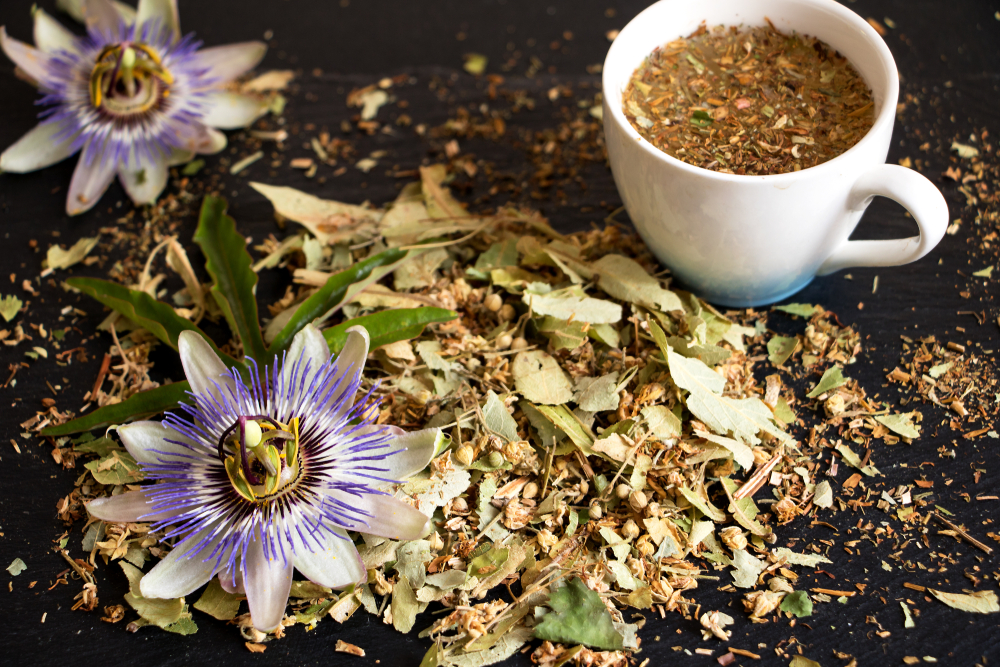
 Chamomile is known for its soothing properties and can help promote relaxation and treat issues like insomnia. It is believed to work by increasing levels of GABA–a neurotransmitter that helps to calm the nervous system.
Chamomile is known for its soothing properties and can help promote relaxation and treat issues like insomnia. It is believed to work by increasing levels of GABA–a neurotransmitter that helps to calm the nervous system.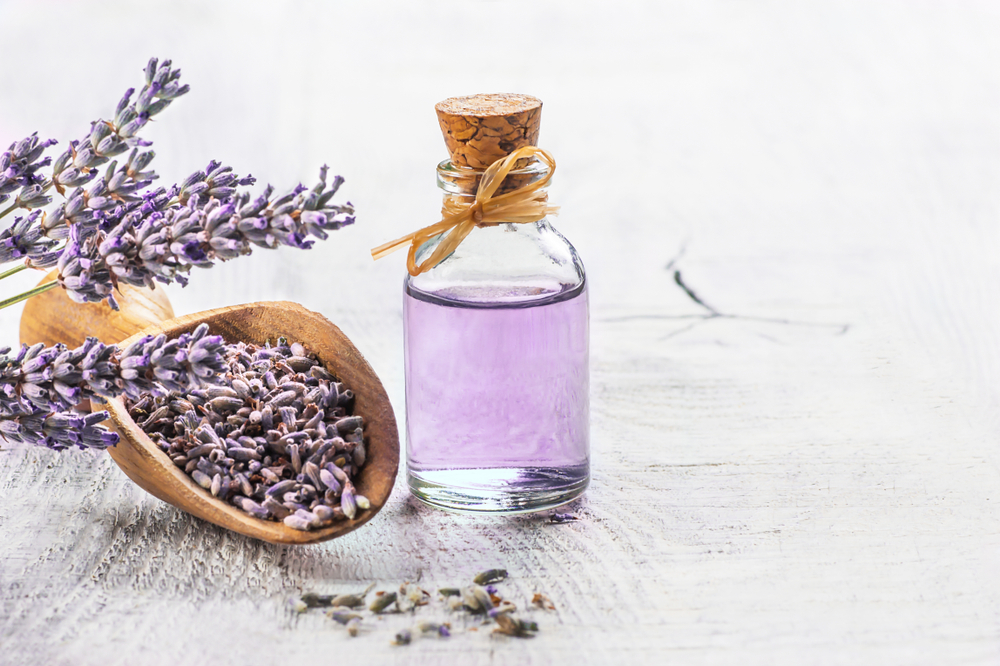 Lavender is known for its calming and relaxing properties. It has been used for centuries as a natural remedy for mental health conditions, such as anxiety and depression.
Lavender is known for its calming and relaxing properties. It has been used for centuries as a natural remedy for mental health conditions, such as anxiety and depression.  One way to increase the effectiveness of herbal medicine, even more, is to combine it with other mental health practices, like meditation, yoga, and
One way to increase the effectiveness of herbal medicine, even more, is to combine it with other mental health practices, like meditation, yoga, and  While many of us focus on the physical side of our well-being, we shouldn’t forget that there are two sides to our health– the physical and the mental. Natural herbal medicine is beneficial for both but especially helpful for our mental health. Herbs offer a gentle and holistic healing approach to easing emotional fluctuations and act as antidotes to depression, mood swings, and anxiety.
While many of us focus on the physical side of our well-being, we shouldn’t forget that there are two sides to our health– the physical and the mental. Natural herbal medicine is beneficial for both but especially helpful for our mental health. Herbs offer a gentle and holistic healing approach to easing emotional fluctuations and act as antidotes to depression, mood swings, and anxiety. 
 Perhaps a daunting task, accounting for your current life is the first essential step you should take when aiming to re-ignite your happiness and find life’s purpose.
Perhaps a daunting task, accounting for your current life is the first essential step you should take when aiming to re-ignite your happiness and find life’s purpose.  Think about the experiences that have had the most significant impact on your life. What have you learned from these experiences? How have they shaped who you are today? Reflecting on your past can help you identify patterns and themes that can guide you toward your purpose.
Think about the experiences that have had the most significant impact on your life. What have you learned from these experiences? How have they shaped who you are today? Reflecting on your past can help you identify patterns and themes that can guide you toward your purpose. Think about the principles and beliefs that are most important to you. What kind of impact do you want to make in the world? What causes do you feel passionate about? Identifying your values can help guide you toward a purpose that aligns with your beliefs.
Think about the principles and beliefs that are most important to you. What kind of impact do you want to make in the world? What causes do you feel passionate about? Identifying your values can help guide you toward a purpose that aligns with your beliefs. What are your unique talents and skills? What are you good at, and what comes naturally to you? Consider how you can use these strengths to make a difference in the world.
What are your unique talents and skills? What are you good at, and what comes naturally to you? Consider how you can use these strengths to make a difference in the world. Take some time to reflect on what you enjoy doing, what you’re naturally good at, and what activities give you a sense of fulfillment. Consider exploring new hobbies, taking classes, or volunteering in areas that interest you.
Take some time to reflect on what you enjoy doing, what you’re naturally good at, and what activities give you a sense of fulfillment. Consider exploring new hobbies, taking classes, or volunteering in areas that interest you.  Be open to new experiences and challenges. Trying new things can help you discover interests and passions you didn’t even know you had.
Be open to new experiences and challenges. Trying new things can help you discover interests and passions you didn’t even know you had. Volunteering or helping others can give you a sense of purpose and fulfillment. Consider how you can use your skills and passions to make a positive impact on the life of others, you’ll be surprised by the positive effect that will have on your own life and purpose.
Volunteering or helping others can give you a sense of purpose and fulfillment. Consider how you can use your skills and passions to make a positive impact on the life of others, you’ll be surprised by the positive effect that will have on your own life and purpose.  Finding someone who has experience in your areas of interest can be helpful. They can guide you on how to approach your passions and offer insight into the steps you may need to take.
Finding someone who has experience in your areas of interest can be helpful. They can guide you on how to approach your passions and offer insight into the steps you may need to take. Once you’ve explored the different areas of your life and decided which are the things that make you happy, the things you want to change, and the new things you’d love to learn, try, and find fulfillment with, it’s time to set goals.
Once you’ve explored the different areas of your life and decided which are the things that make you happy, the things you want to change, and the new things you’d love to learn, try, and find fulfillment with, it’s time to set goals.  One effective method to set and follow your goals more closely is the SMART framework. This stands for Specific, Measurable, Attainable, Relevant, and Time-bound.
One effective method to set and follow your goals more closely is the SMART framework. This stands for Specific, Measurable, Attainable, Relevant, and Time-bound.  When we surround ourselves with positive and supportive people, we are encouraged and motivated to achieve our goals. So surrounding ourselves with people who care and love us is vital.
When we surround ourselves with positive and supportive people, we are encouraged and motivated to achieve our goals. So surrounding ourselves with people who care and love us is vital. This sentence might sound corny, but that doesn’t make it less of a truth. Seek out friends and family who encourage you, challenge you, and support your goals. Being around people who are negative or unsupportive can be draining and hinder your progress.
This sentence might sound corny, but that doesn’t make it less of a truth. Seek out friends and family who encourage you, challenge you, and support your goals. Being around people who are negative or unsupportive can be draining and hinder your progress. This step isn’t always easy. We sometimes get in the habit of keeping quiet instead of facing friends and family with open and on occasion touchy subjects just to keep the peace.
This step isn’t always easy. We sometimes get in the habit of keeping quiet instead of facing friends and family with open and on occasion touchy subjects just to keep the peace.  It’s not just about talking. it’s also about listening. Listening to others is a way to show that you care, and it can help you gain valuable insights and perspectives.
It’s not just about talking. it’s also about listening. Listening to others is a way to show that you care, and it can help you gain valuable insights and perspectives. Don’t take your loved ones for granted. Let them know how much you appreciate their support and encouragement. A simple “thank you” can go a long way.
Don’t take your loved ones for granted. Let them know how much you appreciate their support and encouragement. A simple “thank you” can go a long way. Regular
Regular  A healthy diet
A healthy diet  Taking time to care for yourself has a significant impact on your overall well-being. An improvised “spa day” where you treat yourself to a massage, or a mani-pedi (even at home and done by yourself) can make all the difference.
Taking time to care for yourself has a significant impact on your overall well-being. An improvised “spa day” where you treat yourself to a massage, or a mani-pedi (even at home and done by yourself) can make all the difference.  Mental health is not only important for overall well-being, but it is also critical in achieving your goals and dreams. Without good mental health, you will hardly ever make progress toward feeling purposeful and fulfilled.
Mental health is not only important for overall well-being, but it is also critical in achieving your goals and dreams. Without good mental health, you will hardly ever make progress toward feeling purposeful and fulfilled. 
 Twelve subgroups of vegetables exist, and each supplies important minerals, vitamins, and dietary fiber that benefit your health. Eating a variety of vegetables offers a range of benefits like lower risk of hypertension and heart disease, improved digestive health, and diabetes control. A diet high in plant compounds helps fight inflammation, supports eye and bone health, improves your skin, and enhances immunity. Vegetables are also high in water content and low in calories, carbohydrates, and fat, and a regular intake helps maintain a healthy weight.
Twelve subgroups of vegetables exist, and each supplies important minerals, vitamins, and dietary fiber that benefit your health. Eating a variety of vegetables offers a range of benefits like lower risk of hypertension and heart disease, improved digestive health, and diabetes control. A diet high in plant compounds helps fight inflammation, supports eye and bone health, improves your skin, and enhances immunity. Vegetables are also high in water content and low in calories, carbohydrates, and fat, and a regular intake helps maintain a healthy weight. 

 Eating meals that are mostly veggies is another way to get your daily quota and ensure you eat vegetables every day. You will find plenty of delicious recipes that make veggies the hero, like smoky quinoa taco bowls, ratatouille stir-fry, stuffed portobello mushrooms or peppers, and veggie frittata. Also, there are a number of creative ways to eat more vegetables, like sneaking them into noodles, puddings, or quesadillas.
Eating meals that are mostly veggies is another way to get your daily quota and ensure you eat vegetables every day. You will find plenty of delicious recipes that make veggies the hero, like smoky quinoa taco bowls, ratatouille stir-fry, stuffed portobello mushrooms or peppers, and veggie frittata. Also, there are a number of creative ways to eat more vegetables, like sneaking them into noodles, puddings, or quesadillas.  Packing a salad for lunch is not only a time-saver but will help you to cut down on empty calories that fast food usually has. To make your salad as healthy, tasty, and colorful as possible, include a variety of vegetables and add some healthy fats and protein to give it a boost. Healthy proteins to add to your salad include chickpeas, eggs, tofu, chicken breast, and sliced tuna. You can finish with healthy fats to make your salad tastier and more filling, like sunflower or pumpkin seeds, pecans, cashews, or avocado.
Packing a salad for lunch is not only a time-saver but will help you to cut down on empty calories that fast food usually has. To make your salad as healthy, tasty, and colorful as possible, include a variety of vegetables and add some healthy fats and protein to give it a boost. Healthy proteins to add to your salad include chickpeas, eggs, tofu, chicken breast, and sliced tuna. You can finish with healthy fats to make your salad tastier and more filling, like sunflower or pumpkin seeds, pecans, cashews, or avocado.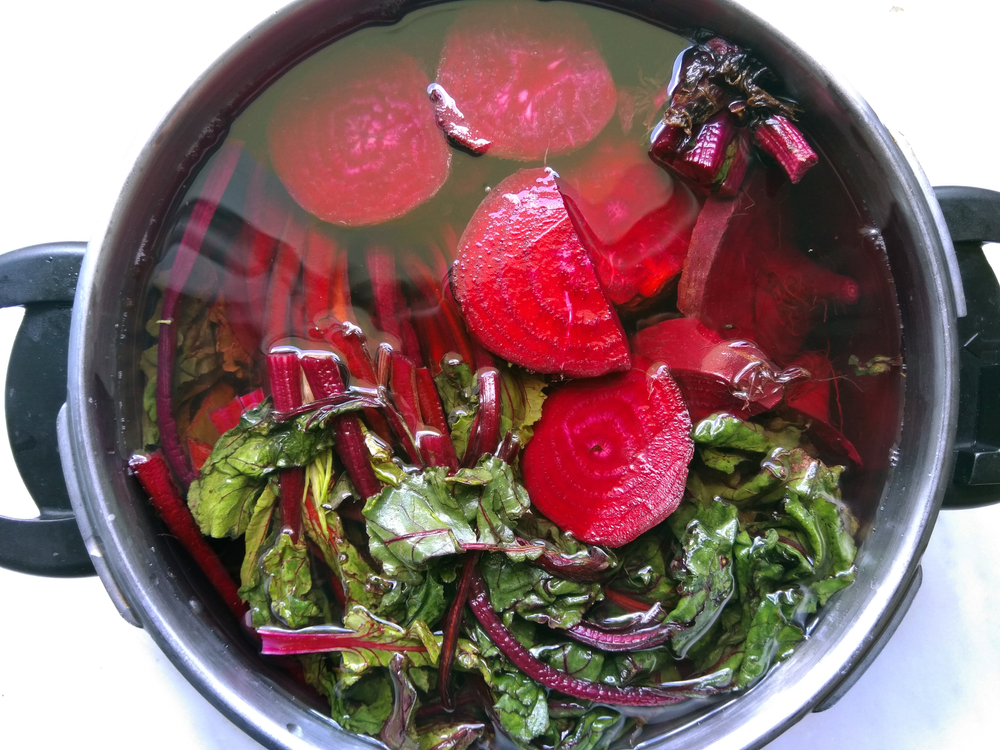 You can experiment with different cooking methods to diversify your everyday meals. Dry heat cooking, for example, includes roasting, sauteing, stir-frying, pan-frying, grilling, and barbecuing. You can roast or grill vegetables with healthy oil and garnish them with parsley or dried thyme. Or you can make a stir-fry with seasonal veggies and tofu, chicken, or beef.
You can experiment with different cooking methods to diversify your everyday meals. Dry heat cooking, for example, includes roasting, sauteing, stir-frying, pan-frying, grilling, and barbecuing. You can roast or grill vegetables with healthy oil and garnish them with parsley or dried thyme. Or you can make a stir-fry with seasonal veggies and tofu, chicken, or beef.
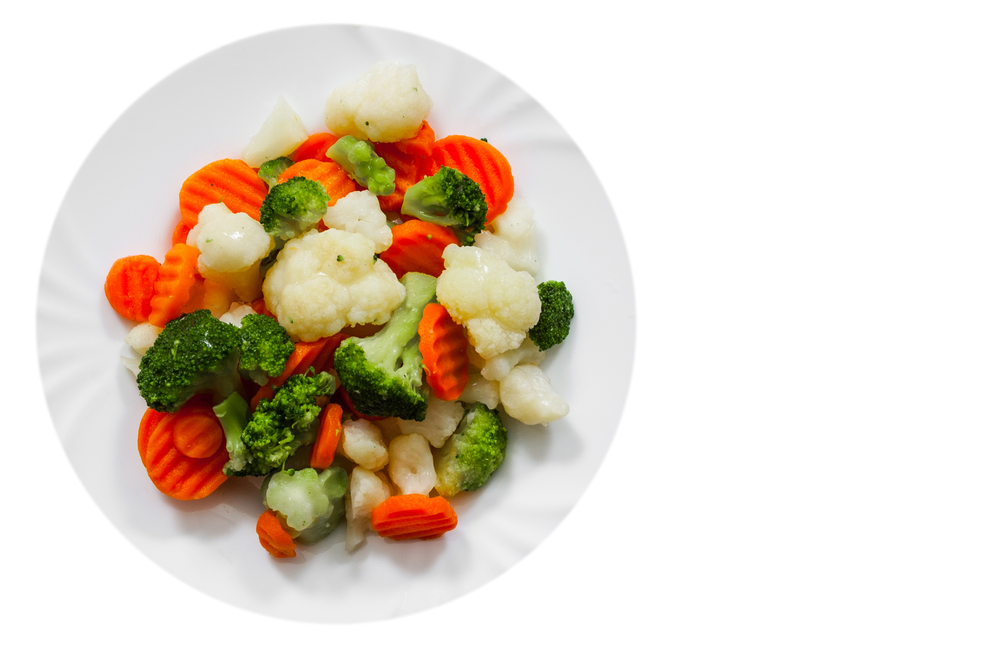
 There are plenty of creative ways to incorporate vegetables into your meals, like adding veggies to pancakes, waffles, biscuits, and cakes. You can add zucchini to your brownie batter, carrots to cookies, or avocados to pudding. Sweet potatoes can be pureed into a mousse and squashed into a cheesecake. You can even try vegetable ice cream with sweet corn, tomato, carrot, or beetroot. As veggie ice creams are low in sugar, they are healthier than regular ice creams and can be easily prepared at home.
There are plenty of creative ways to incorporate vegetables into your meals, like adding veggies to pancakes, waffles, biscuits, and cakes. You can add zucchini to your brownie batter, carrots to cookies, or avocados to pudding. Sweet potatoes can be pureed into a mousse and squashed into a cheesecake. You can even try vegetable ice cream with sweet corn, tomato, carrot, or beetroot. As veggie ice creams are low in sugar, they are healthier than regular ice creams and can be easily prepared at home.  Spinach is rich in a number of nutrients, including potassium, folate, iron, and vitamins K, C, and A. It is also loaded with fiber and essential plant compounds like quercetin and lutein which promote eye and heart health and fight inflammation and infection.
Spinach is rich in a number of nutrients, including potassium, folate, iron, and vitamins K, C, and A. It is also loaded with fiber and essential plant compounds like quercetin and lutein which promote eye and heart health and fight inflammation and infection.
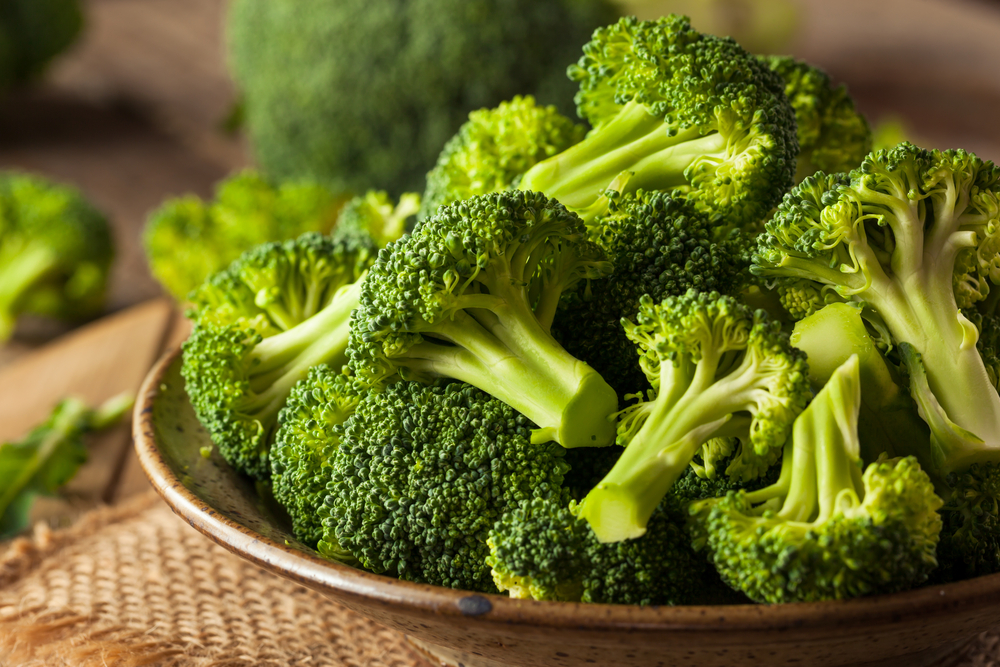 One of the most nutrient-dense vegetables you’ll find year-round, broccoli is packed with potassium, iron, calcium, vitamins K and C, protein, fiber, and folate. When steamed, just one-half cup supplies over 50 percent of your vitamin C daily intake. You need this antioxidant to protect yourself from free radical damage and infections and to maintain good blood vessels, skin, and bone health. Nutrients in broccoli also improve brain function, keep your heart healthy, and support hormonal balance.
One of the most nutrient-dense vegetables you’ll find year-round, broccoli is packed with potassium, iron, calcium, vitamins K and C, protein, fiber, and folate. When steamed, just one-half cup supplies over 50 percent of your vitamin C daily intake. You need this antioxidant to protect yourself from free radical damage and infections and to maintain good blood vessels, skin, and bone health. Nutrients in broccoli also improve brain function, keep your heart healthy, and support hormonal balance.

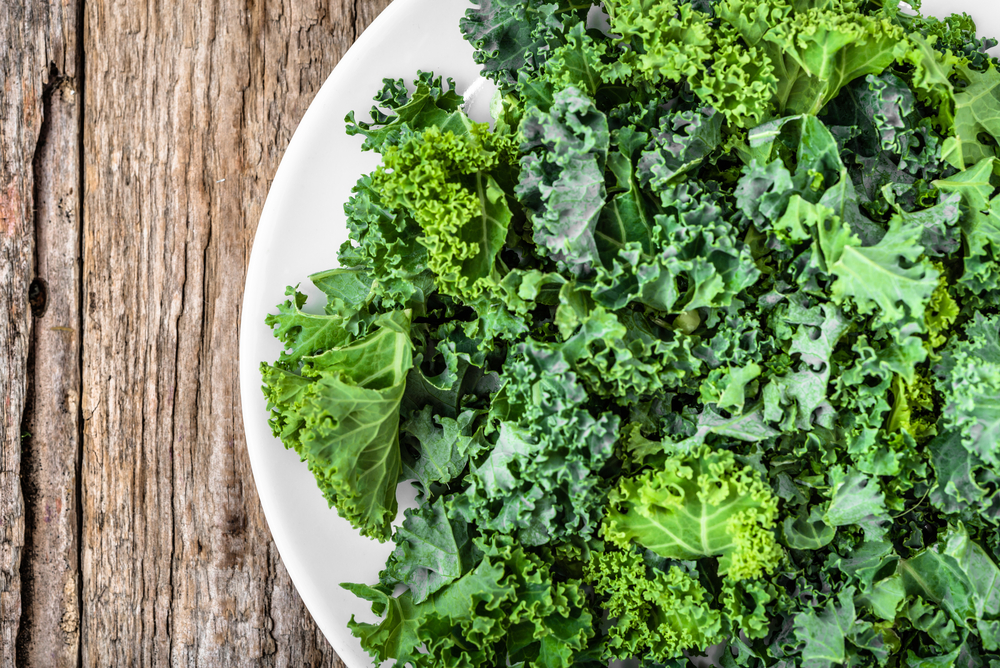





 Sweet potatoes are one of the most nutrient-dense vegetables, packing a good amount of potassium, manganese, and vitamins C and A into each serving. They vary from red and purple to white, yellow-orange, and orange and are rich in fiber and antioxidants like carotenoids and flavonoids which have anti-inflammatory properties. Flavonoids, along with phenolic compounds help balance blood sugar levels, aiding diabetes management. Purple sweet potatoes also contain anthocyanins, a group of antioxidants
Sweet potatoes are one of the most nutrient-dense vegetables, packing a good amount of potassium, manganese, and vitamins C and A into each serving. They vary from red and purple to white, yellow-orange, and orange and are rich in fiber and antioxidants like carotenoids and flavonoids which have anti-inflammatory properties. Flavonoids, along with phenolic compounds help balance blood sugar levels, aiding diabetes management. Purple sweet potatoes also contain anthocyanins, a group of antioxidants
 No single vegetable supplies all the minerals, vitamins, antioxidants, and plant compounds you need to stay healthy and feel your best. Eating a variety of colors, flavors, and types provides your body with the mix of fibers, phytochemicals, and nutrients you need. Expanding variety and increasing your consumption of veggies can benefit your health in a number of different ways. Nutrients in vegetables improve blood pressure, balance blood sugar levels, reduce the risk of heart disease, improve digestive health, and enhance immunity.
No single vegetable supplies all the minerals, vitamins, antioxidants, and plant compounds you need to stay healthy and feel your best. Eating a variety of colors, flavors, and types provides your body with the mix of fibers, phytochemicals, and nutrients you need. Expanding variety and increasing your consumption of veggies can benefit your health in a number of different ways. Nutrients in vegetables improve blood pressure, balance blood sugar levels, reduce the risk of heart disease, improve digestive health, and enhance immunity. Menopause is the point when your ovaries stop releasing eggs and reproductive hormones and you no longer have menstrual periods. The diagnosis of menopause is based on the absence of menstrual bleeding for 12 consecutive months. It is made by reviewing a woman’s symptoms and menstrual and medical history.
Menopause is the point when your ovaries stop releasing eggs and reproductive hormones and you no longer have menstrual periods. The diagnosis of menopause is based on the absence of menstrual bleeding for 12 consecutive months. It is made by reviewing a woman’s symptoms and menstrual and medical history. 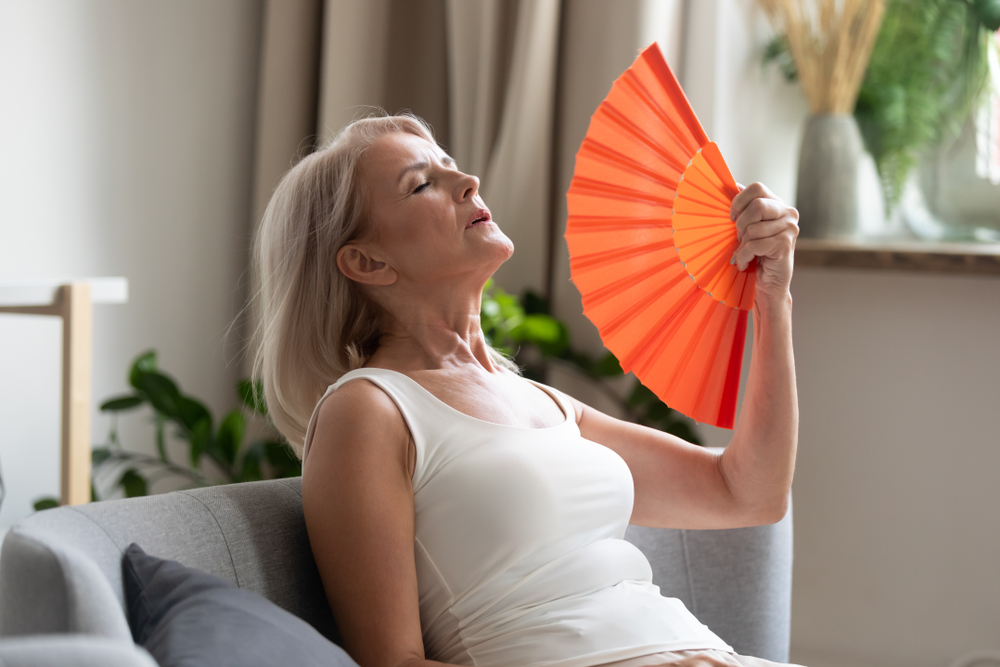

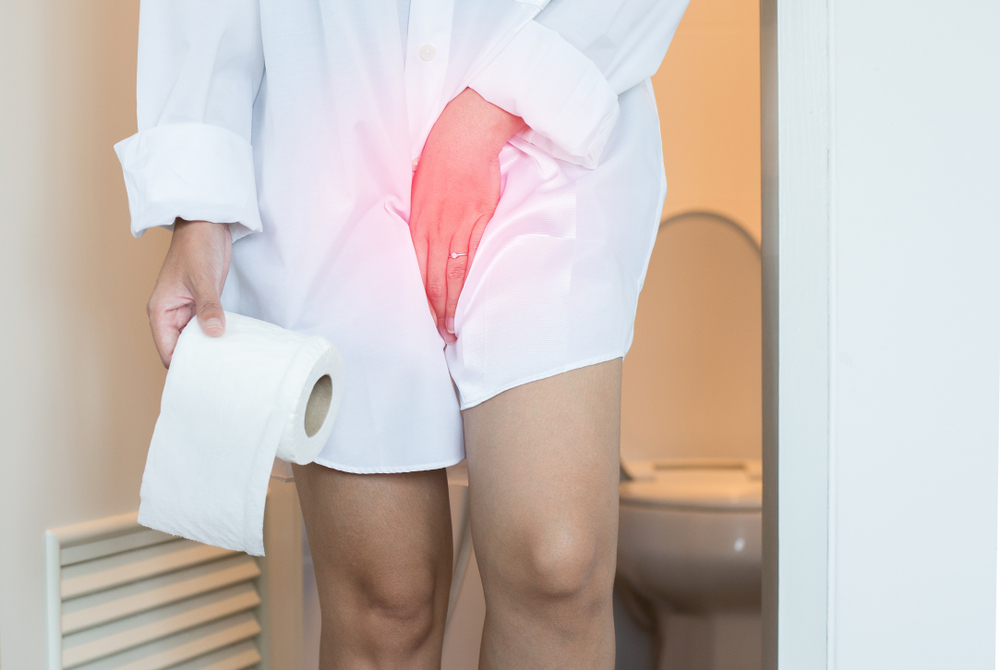
 While short-term insomnia is often due to a traumatic event or stress, menopause-related sleep disturbances are caused by falling levels of progesterone and estrogen. Depression and anxiety, changes in mood, night sweats, and hot flashes also contribute to frequent waking and poor sleep. Symptoms of insomnia include feeling tired or sleepy during the day, waking up too early, less than 6 hours of sleep at night, and not feeling rested when you wake up.
While short-term insomnia is often due to a traumatic event or stress, menopause-related sleep disturbances are caused by falling levels of progesterone and estrogen. Depression and anxiety, changes in mood, night sweats, and hot flashes also contribute to frequent waking and poor sleep. Symptoms of insomnia include feeling tired or sleepy during the day, waking up too early, less than 6 hours of sleep at night, and not feeling rested when you wake up.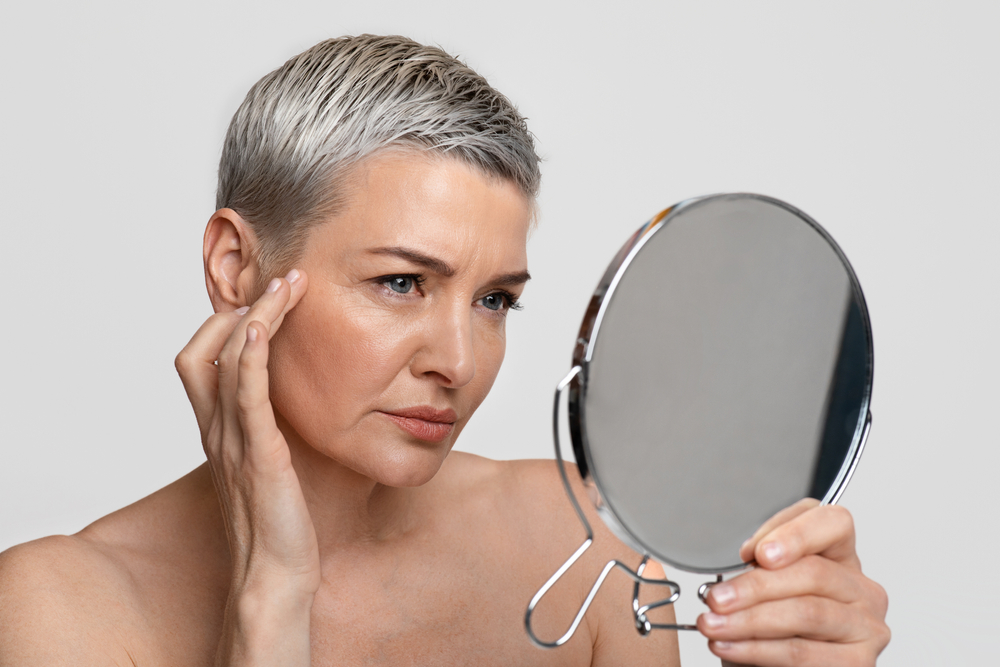






 Menopause and the symptoms it can bring can hurt your quality of life. Sleep may become elusive, with hot flashes and night sweats leaving you exhausted and low. Many women also experience anxiety, mood swings, brain fog, and a devastating loss of confidence and become socially withdrawn as a result.
Menopause and the symptoms it can bring can hurt your quality of life. Sleep may become elusive, with hot flashes and night sweats leaving you exhausted and low. Many women also experience anxiety, mood swings, brain fog, and a devastating loss of confidence and become socially withdrawn as a result.